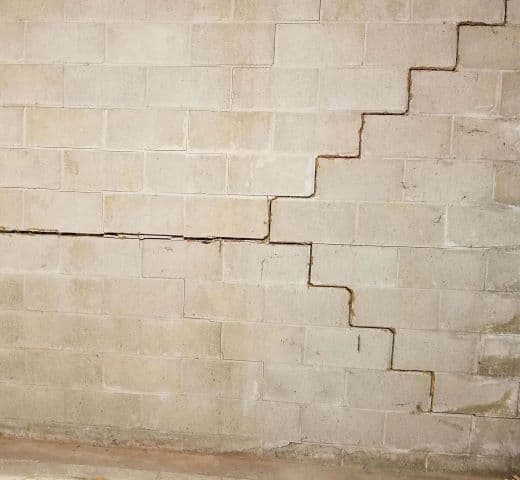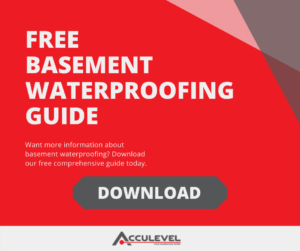What Is The Clay Bowl Effect?

Every industry has its obscure terms, and foundation repair is no exception. The “clay bowl effect” is one of those terms that you may have heard. It may have left you wondering what pottery making has to do with your home’s structure!
At Acculevel, our goal is to provide you with a whole-home solution. We want to address both the symptoms you’re experiencing and the root causes of the issue. We also want to clearly explain what our repairs are meant to do, and how they work. Since our start in 1996, we’ve helped more than 35,000 homeowners preserve and protect their homes for the future.
In this blog, we’re going to explain what the clay bowl effect is, how it develops, why it’s a problem, and how to reduce its effects on your house’s foundation.
What Is The Clay Bowl Supposed To Be?
The “clay bowl” refers to the loosely packed soil that was backfilled around your home’s foundation when it was initially built.
When your home’s foundation was constructed, the builder dug a larger space in the earth than your home was going to require. This allowed the construction team to easily work on your foundation from the outside. Once the foundation was finished, the gap was filled back in (backfilled) with the soil they displaced during the original dig.
The “bowl” refers to the shape of this distubed soil around and underneath your home. The “clay” refers to soil that contains a large amount of clay- sometimes called expansive soil. This type of soil doesn’t drain as easily as other soil types.
So, to sum up, the clay bowl describes loosely packed clay-dominant soil around your home’s foundation.
Not sure if you have expansive or granular soil? Dig up a handful of damp earth from your yard. (If it’s very dry, you may have to add a bit of water.) Now try to pack the dirt like a snowball in your hands. Does it pack together well or crumble? If it packs together, it has more clay in it.
What Effect Does This “Clay Bowl” Have On My House?
The clay bowl effect is a combination of problems. When it gets wet, clay-dominant soil expands, which is why it’s referred to as expansive soil. As something expands, it gets larger, pushing outward.
If this expansive soil is loosely packed, it absorbs water more easily, expanding faster. As the soil reaches full saturation and expands, it pushes against your foundation. This pressure is called hydrostatic pressure, and it often causes foundation cracks and water intrusion.

This photo was taken by an Acculevel project advisor during a free in-home assessment. There are multiple cracks in this basement wall, and water has been seeping in.
If you have noticed cracks in your foundation, it’s important to have these evaluated and repaired by a professional. You can learn more in this blog, which reviews the three major types of cracks and how urgently they need to be addressed.
Have you noticed water seeping into your basement, but not seen any cracks? It’s possible water is pushing its way through the wall or floor; concrete is a porous material. If this is the case, waterproofing around the inside perimeter of your basement should manage this water intrusion- and maybe even prevent cracks from forming in the first place.
We encourage you to use our free homeowner’s guide to basement waterproofing. This is a free resource that we’ve designed to answer all of your frequently asked questions; we explore waterproofing methods, costs, potential problems, and additional options for you to consider.
How Can You Protect Your Home?
There are a number of preventative measures that you can take to reduce the risks to your foundation.
4 Ways to Protect Your Foundation From The Clay Bowl Effect
- All soil, regardless of type, does settle and compact over time. It is important that you maintain a healthy grading to your property. The ground around your home should not be flat; it should slope down and away from your foundation. This encourages rainwater to drain away from your home.
- Make sure your guttering is in good condition and free of clogs. Clean out your gutters and check that your downspouts also drain down and away from your home. We recommend that downspouts should be at least 10 feet long.
- Be cautious about what you plant close to your home. Plant roots can cause significant damage to both your foundation and to the utilities that connect to it. You should also make sure that any borders or decorative elements do not interfere with proper grading and drainage.
- Perform a visual inspection of your home and property twice a year. We recommend doing this in the spring and fall, because severe weather conditions are more common in the summer and winter months. We have a free checklist that will guide you through a DIY foundation inspection and help you identify potential warning signs.
Do You Need A Professional Assessment Of Your Home?
If you live in Indiana or the areas surrounding the Hoosier state, contact Acculevel! We’ll schedule an in-home appointment with one of our knowledgeable and experienced foundation experts.
They will meet with you, discuss what problems you’ve been experiencing, then conduct a detailed review of your home. Once they’ve completed the assessment, they will sit down and discuss their findings with you. As a team, you and your advisor will determine the best whole-home solution for you and your family.
If you don’t live in our service area, please make sure you are working with a contractor who is properly insured and accredited by the Better Business Bureau. Download our checklist of questions to ask a contractor, which is designed to help you thoroughly vet any company you work with.

